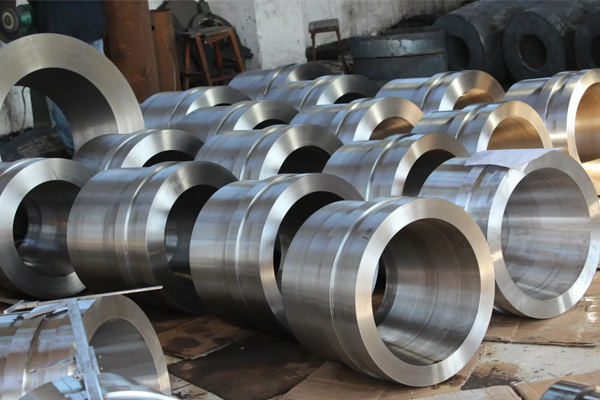Forging processing characteristics of forging products
Forging plant forging products are plastic deformation through forging processing, forging processing is the use of external force to produce plastic deformation of forging raw materials, forging size, shape and performance of the blank or parts of the processing method. Through the forging process can eliminate the defects such as loose cast state in the smelting process of metal, optimize the microstructure, at the same time because of the preservation of a complete metal forging streamline, greatly strengthen the performance of the forgings in use.
Forging is one of the main methods of blank and parts production in mechanical manufacturing, which is often divided into free forging, die forging and so on. Compared with other processing methods, forging has the following characteristics:
1. improve the internal structure of forgings, improve mechanical properties. Forging blank after forging processing, its organization, the performance is improved and improve, forging processing can remove the inside of the metal ingot casting defects such as blow hole, shrinkage cavity and dendritic crystal, and as a result of the metal plastic deformation and recrystallization, can make the rough grain refinement, get the dense metal organization, so as to improve the mechanical properties of forgings. The impact resistance of forgings can be improved if the force direction and fiber structure direction are selected correctly in part design.

2. high utilization rate of materials. Metal plastic forming mainly depends on the relative position of the metal shape and tissue rearrangement, without cutting the metal.
3. Higher productivity. Forging processing is generally the use of press and hammer forming processing.
4. High precision of blank or forging. The application of the best technology and equipment, can achieve less cutting or no cutting.
5. the metal materials used for forging should have good plasticity, so that under the action of external forces, can produce plastic deformation without rupture. Among the commonly used metal materials, cast iron is a brittle material, poor plasticity, can not be used for forging. Copper, aluminum and their alloys in steel and non-iron metals can be pressed under cold or hot conditions.
6. It is not suitable for forging with complex shape. Forging process is formed in solid state, compared with casting, metal flow is limited, generally require the use of heating and other technological measures to achieve. It is difficult to manufacture parts or blanks with complex shapes, especially complicated cavities.
Because of the above characteristics of forging, so bearing impact or alternating stress of important parts (such as transmission spindle, gear ring, connecting rod, rail wheel, etc.), should be used for forging blank processing, so forging processing in machinery manufacturing, mining, light industry, heavy industry and other industries have been widely used.